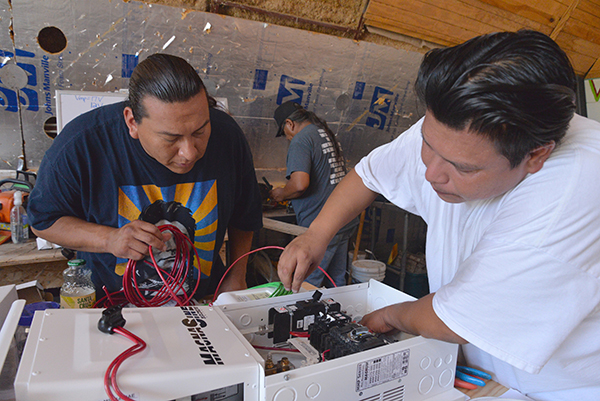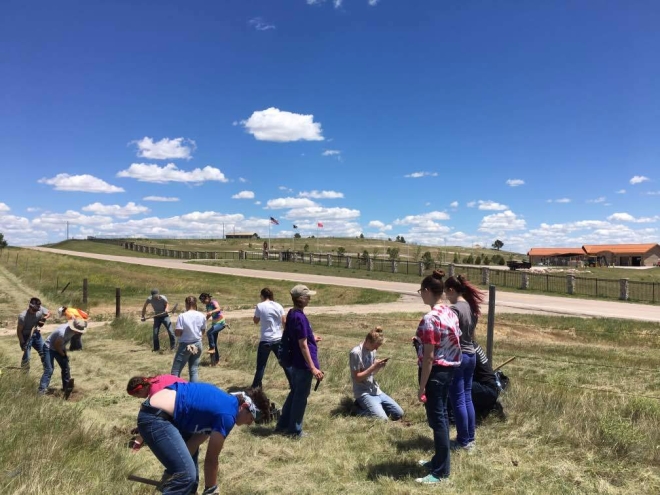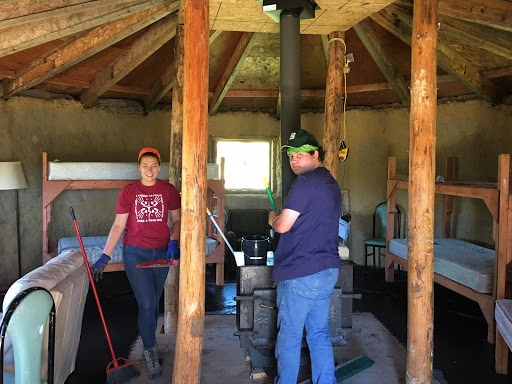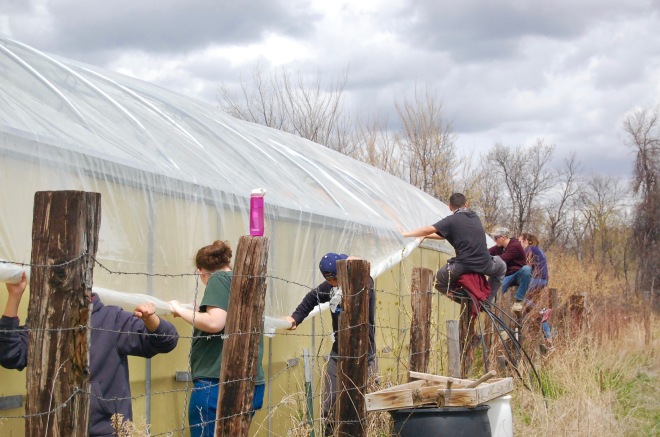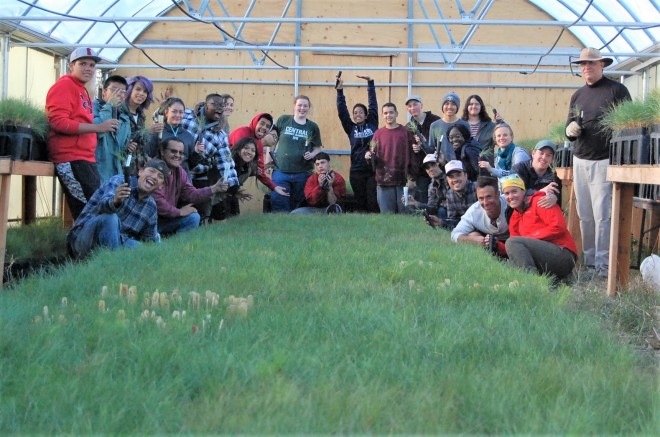By James Zafarana, CSU Alternative Break Participant
I feel blessed to have gone to the Pine Ridge Reservation with Trees, Water & People and Colorado State University. Over the past few months, our group of eight students have been learning about the reality of life on Pine Ridge. It was honestly scary. The statistics speak for themselves. Indigenous communities in our country face some daunting institutional barriers. It made me wonder where we can target interventions to chip away at these obstacles. Trees, Water & People, along with the community partners we worked with on the reservation, taught me how we can work collaboratively to dissect these issues.
During our trip, we spent a day at the Allen Youth Center, where we saw how the Center is providing a safe space for youth on Pine Ridge. During the day, we played with kids and learned about how the Center is mentoring the kids and helping to preserve Lakota culture. The mentors told us how they are attempting to combat the high dropout rate, mental health, and substance abuse issues through mentoring.

We spent two days at the Red Cloud Renewable Energy Center. During this time we helped maintain their sustainable garden and install a new roof on their greenhouse. Henry Red Cloud, the proprietor of Lakota Solar Enterprises (LSE), showed us how his community is using renewable energy to provide power and heat homes on the reservation, reducing the economic burden of energy use. He explained how his partnership with TWP has enabled LSE to scale up their operation and provide a teaching space for sustainable energy and gardening practices.
Our last day was spent at the Pine Ridge Girls’ School. This school is working hard to revive their culture by incorporating traditional knowledge systems with Western education models. While this school acknowledges the value of teaching Western methods of scientific discovery, they also feel strongly that their mission is to foster an appreciation for their students’ traditional Lakota culture.

Each of these places are tackling these formidable barriers in ways that felt more attainable. This trip was one of those unique experiences that helps refine your values and inspires your future. It demonstrated to me how even some of the most daunting, wicked problems can be tackled when members of the community fight.
For more information about upcoming service trips like this one, please sign up for our email list!



